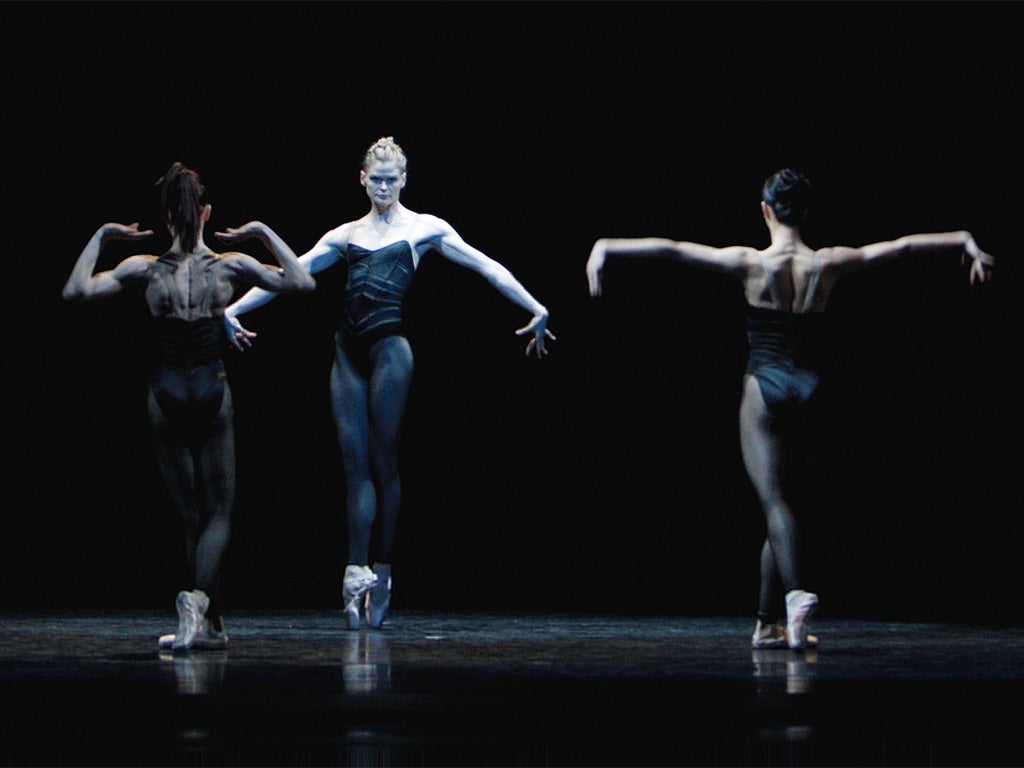La La La Human Steps, Sadler's Wells, London

Your support helps us to tell the story
From reproductive rights to climate change to Big Tech, The Independent is on the ground when the story is developing. Whether it's investigating the financials of Elon Musk's pro-Trump PAC or producing our latest documentary, 'The A Word', which shines a light on the American women fighting for reproductive rights, we know how important it is to parse out the facts from the messaging.
At such a critical moment in US history, we need reporters on the ground. Your donation allows us to keep sending journalists to speak to both sides of the story.
The Independent is trusted by Americans across the entire political spectrum. And unlike many other quality news outlets, we choose not to lock Americans out of our reporting and analysis with paywalls. We believe quality journalism should be available to everyone, paid for by those who can afford it.
Your support makes all the difference.The dancers of Édouard Lock's La La La Human Steps move with furious attack. In New Work, created to celebrate the Montreal company's 30th anniversary, women whip through turns with the jittery quickness of speeded-up film.
Lock and company are known for crash choreography. His original muse, Louise Lecavalier, would hurl herself into the air and barrel turn until she walloped into her partner. The style was death-defying punk. Since then, Lock has smoothed down some of the edges. He's discovered pointework, and the female dancers now have sleek chignons where Lecavalier had flying dreadlocks. The perilous speed remains.
For its first performances, New Work went even further towards classical ballet. Lock created a starring role for the Maryinsky ballerina Diana Vishneva, who had planned to dance the role in London. She then discovered that, "due to her intense work schedule", she couldn't dance it after all.
Watching New Work with Lock's own dancers, there's no sense of a missing star. Liz Vandal dresses the women in a uniform of patterned leotard, black footless tights and pointe shoes. Several soloists emerge, their roles aren't contrasted; they all stalk through the shadows and spotlights. The men are even more anonymous: suited figures who loom darkly then get on withthe partnering.
There's no narrative as such. New Work draws on two tragic operas – Purcell's Dido and Aeneas and Gluck's Orpheus and Eurydice. The composer Gavin Bryars has arranged Purcell and Gluck for piano, cello, viola and saxophone. It's a grainy, chamber sound, with scratchy strings. Familiar melodies emerge only to vanish again. A second composer, Blake Hargreaves, adds atmospheric electronica. Lock's own lighting design adds to the filmic quality of his work. Spotlights pick out dancers, first from one side, then the other. As the lights change, it's like a jerk in the film: the dancers don't seem to be in quite the same place.
In film sequences, we see double portraits of female dancers: the dancer as she is, and an aged-up version of herself, placed side by side. The ageing make-up is impressive, but the idea is repeated too often.
Over 90 minutes, New Work creates a strong mood, and sticks to it. It has driving pace, but it fails to move forward.
Join our commenting forum
Join thought-provoking conversations, follow other Independent readers and see their replies
Comments